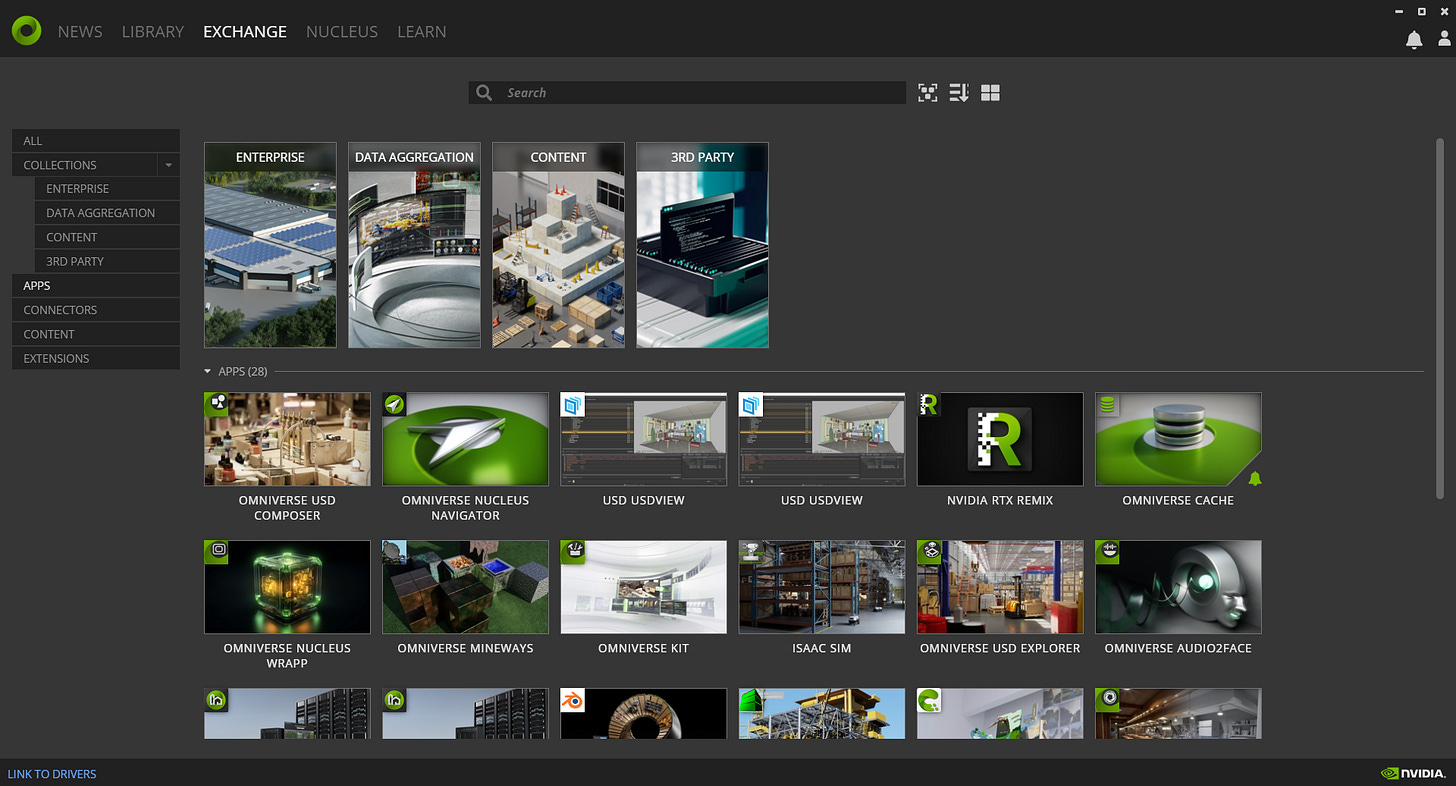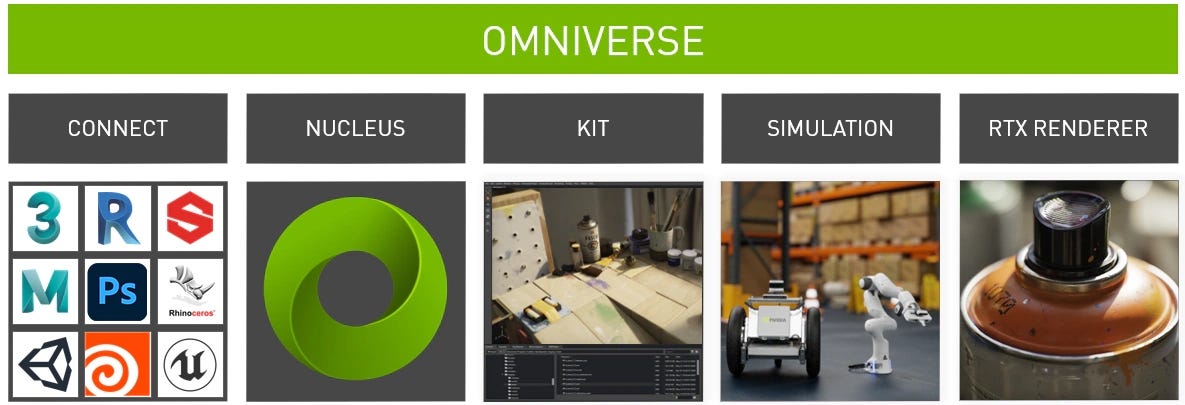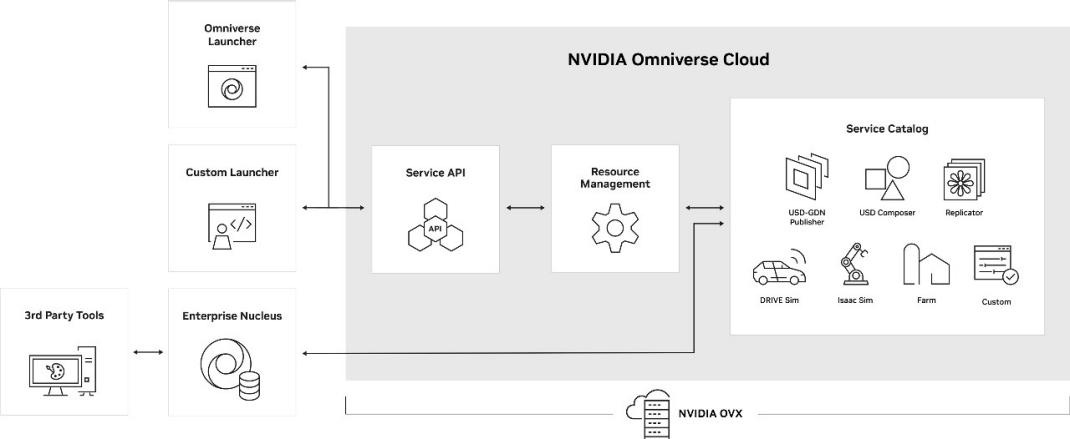What is NVIDIA Omniverse? Who is it meant for? And what are its core features and capabilities?
Taking a deep dive into NVIDIA's platform for building the metaverse.
NVIDIA Omniverse is a real-time 3D simulation and collaboration platform designed to enable the creation of metaverse applications, synthetic data generation, digital twin and robotics simulations.
It provides a range of applications and services through the Omniverse launcher.
Key Components of NVIDIA Omniverse:
Omniverse is built around five main components, offering a highly flexible and scalable environment:
Omniverse Nucleus: Serves as the central database and collaboration engine, enabling users to share and modify virtual world representations.
Omniverse Connectors: These are libraries that allow popular content creation tools to connect to Omniverse, letting users work in their preferred software while leveraging Omniverse's capabilities.
Omniverse Kit: A toolkit for building native Omniverse applications, extensions, and microservices.
Omniverse RTX Renderer: An advanced multi-GPU renderer that supports real-time ray tracing and path tracing, powered by NVIDIA RTX technology.
Omniverse Simulation: Offers a suite of tools and SDKs for simulating a physically accurate world.
Additionally, Omniverse facilitates the development of tools for modern 3D workflows, supercharging 3D tools with NVIDIA's cutting-edge graphics, compute, and AI technologies. It allows for the rapid production of new offerings through low- and no-code development options, extending over 500 modifiable extensions and apps (https://developer.nvidia.com/omniverse). This platform also provides opportunities to reach new markets in various industries like automotive, manufacturing, and retail, by integrating and digitalizing 3D content and workflows within the NVIDIA ecosystem.
Moreover, Omniverse provides on-premise as well as cloud deployment options.
What Omniverse offers for users:
For 3D Artists and Designers:
Omniverse provides a seamless, real-time collaboration environment for artists and designers to work on 3D content, animations, and scenes.
It supports popular 3D content creation tools like Maya, Blender, and 3ds Max, allowing for easy integration and data exchange.
For Architects and Engineers:
Omniverse enables architects, engineers, and construction professionals to create, simulate, and visualize complex 3D models and environments.
It allows for real-time simulation of physical phenomena, such as lighting, physics, and fluid dynamics, to help optimize designs.
For Researchers and Scientists:
Omniverse can be used for scientific simulations, data visualization, and virtual experimentation across various fields, such as materials science, climate modeling, and particle physics.
The platform's real-time rendering and collaboration capabilities make it suitable for remote teamwork and data sharing.
For Developers and Programmers:
Omniverse provides a robust SDK and tools for developers to create custom metaverse applications, plugins, and extensions.
It supports a wide range of programming languages, including Python, C++, and Lua, allowing for flexible and extensible development.
Core Features and capabilties:
Real-time Simulation and Rendering:
Omniverse uses NVIDIA's Unreal Engine-based RTX technology to enable high-fidelity, real-time 3D rendering and simulation.
It supports physically-based simulations, including lighting, physics, and fluid dynamics, to create realistic virtual environments.
Collaborative Workflows:
Omniverse allows multiple users to work on the same 3D scene or project simultaneously, with real-time updates and versioning.
It supports various communication and annotation tools to facilitate collaboration among team members.
Universal Scene Description (USD):
Omniverse is built on the USD open-source format, which enables the seamless exchange of 3D data between different software applications.
This allows users to work with a wide range of 3D content and assets, regardless of the original creation tool.
Extensibility and Customization:
Omniverse provides a comprehensive SDK and a plugin system that allows developers to create custom tools, applications, and integrations.
The platform supports scripting in Python, C++, and other languages, enabling advanced customization and automation.
Overall, NVIDIA Omniverse is a powerful platform that aims to enable the creation, simulation, and collaboration of metaverse applications across various industries and use cases.
This was just a basic introduction to the platform and you can dive deep into your areas of interests by checking out additional links provided below.
Additional Links:
https://www.nvidia.com/en-us/omniverse/





